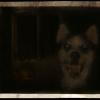10 years ago, writing a library like this was a necessity. Existing libraries were hard to come by, there was no meaningful code sharing, reputable reference implementations were hard to come by or were part of reference packages, perhaps available for large fee to standardization committees. Heck, internet access was a problem.
So people in a pinch did the next best thing. They looked up wotsit.org, quickly parsed a few fields, tweaked until it worked. Maybe posted as a tutorial or sample code somewhere. Perhaps it got reused.
Result of the era was a ton of minimal readers/parsers that barely got the job done.
Then web exploded. Standard-compliant implementations became much more important, reuse became the norm, licenses were relaxed, patents expired. These libraries made their way into standard libraries, OSes and browsers. Suddenly getting vast exposure, their correctness was suddenly tested daily by 1 billion users. And patches made it back to source.
Regardless how one feels about cost vs. effort, these is actual engineering at its best. Without some really specific requirements in some adequately demanding project (corporate or hobby development is not it), the case for NIH is over.
These are solved problems. C and C++ remain as clumsy as ever in integrating third-party libraries. There are probably a lot of benign warnings that will crop up. But these libraries work, in real world on real data.
What do they buy you? Trillions of hours of QA. Billions of parsed images, from valid to invalid. Millions of users. Tens of thousands of hardware configurations. Hundreds of compilers.
Cost of replicating this effort is sufficient to cover entire economic debt of every country today. And it's available for free. Isn't it worth spending 3 hours downloading and integrating this one library?
Impressive, isn't it.






